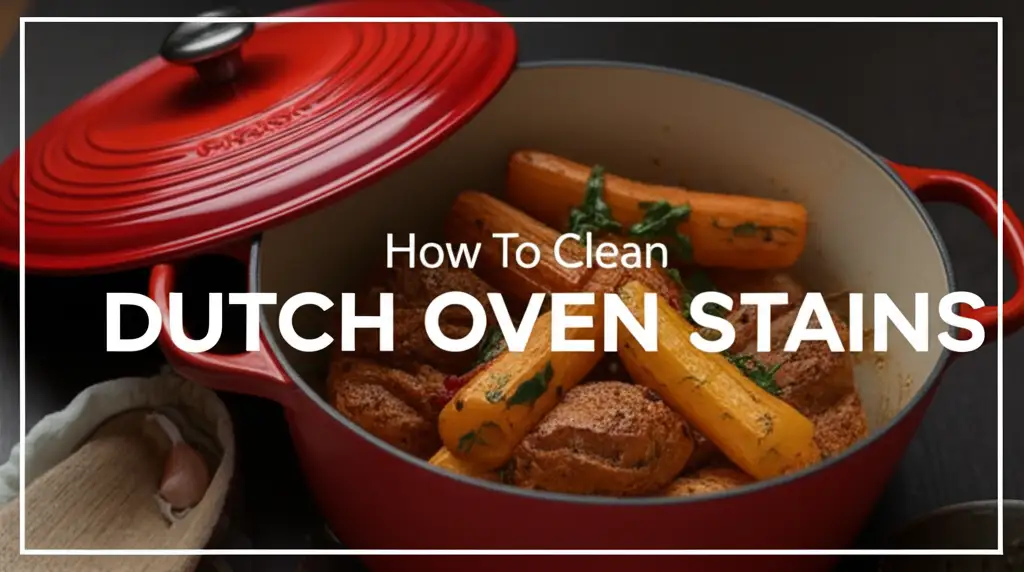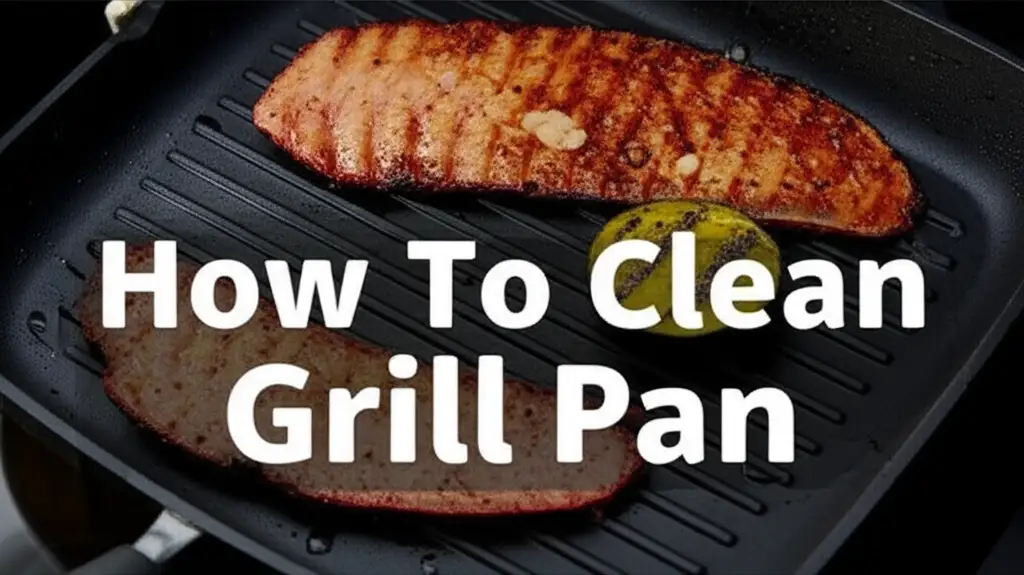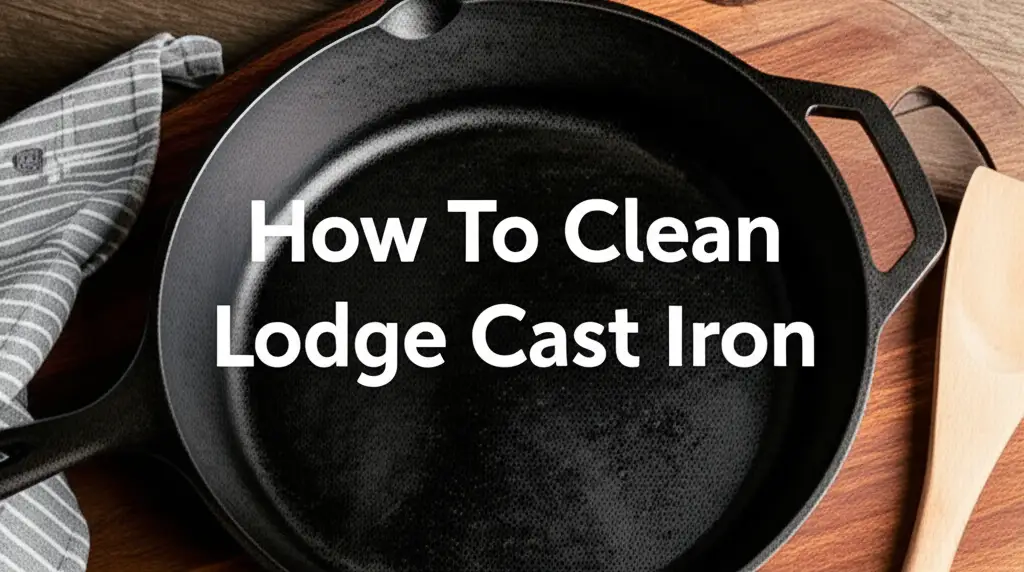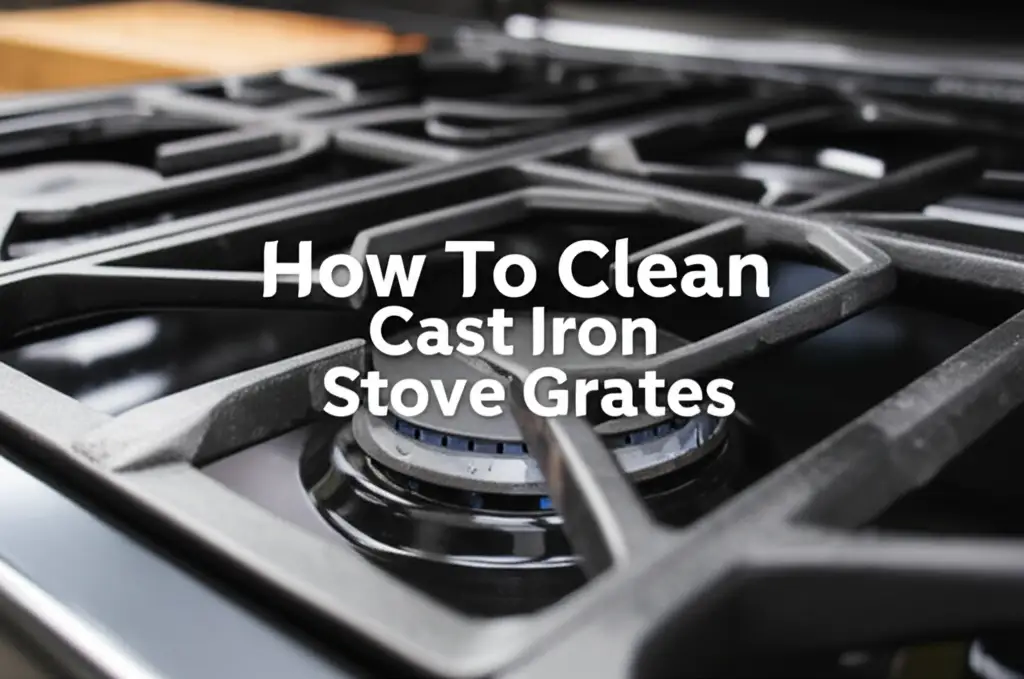· Kitchen Care · 15 min read
How To Clean Enameled Cast Iron
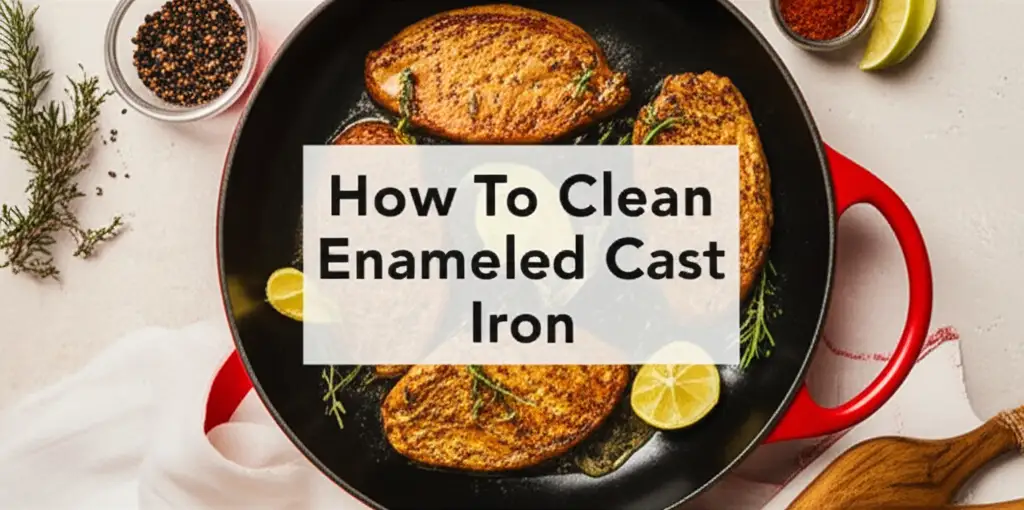
Keep Your Enameled Cast Iron Cookware Spotless
Enameled cast iron cookware brings beauty and durability to your kitchen. These pieces are often kitchen workhorses. They handle everything from slow braises to quick sautés. However, they need proper care to stay beautiful and functional. Cleaning enameled cast iron correctly prevents damage. It also keeps your pots and pans looking new. This guide shows you how to effectively clean enameled cast iron cookware. We cover daily cleaning, stain removal, and important maintenance tips. You will learn the best ways to protect your investment.
Takeaway:
- Always cool cookware before washing.
- Use mild soap and soft cleaning tools.
- Address food residue and stains quickly.
- Avoid harsh chemicals and abrasive scrubbers.
- Dry your enameled cast iron thoroughly after cleaning.
To clean enameled cast iron, allow it to cool completely. Wash with warm, soapy water and a non-abrasive sponge or cloth. For stubborn food or stains, soak it for a short time. Avoid metal scrubbers or harsh cleaners to protect the enamel finish.
Essential Tools for Cleaning Enameled Cast Iron
Choosing the right cleaning tools protects your enameled cast iron. The enamel coating is durable but can scratch if you use abrasive materials. Using gentle tools helps preserve the glossy finish. This ensures your cookware lasts for many years. I always recommend having these items ready for your cleaning tasks.
You need soft sponges for daily washing. Microfiber cloths also work well. These materials lift food particles without scratching the surface. Nylon brushes are another good option. They have bristles that are strong enough to dislodge food but soft enough for enamel. Silicone scrapers are excellent for removing stuck-on bits. They get under dried food without damaging the enamel.
Dish soap is your main cleaning agent. Choose a mild liquid soap. Harsh chemicals can dull the enamel or even strip its protective qualities over time. Baking soda is a safe, natural abrasive for tougher spots. It forms a gentle paste that helps lift stains. I keep a box of baking soda in my kitchen just for this purpose.
Avoid certain tools completely. Steel wool or metal scouring pads will scratch the enamel instantly. Abrasive cleaning powders that are not specifically for enamel can also cause damage. Metal utensils used during cooking can also scratch the surface. Use wood, silicone, or nylon utensils when cooking. Using the correct tools makes cleaning easy and safe. This helps your cookware maintain its beauty and performance.
Daily Cleaning of Enameled Cast Iron Pots
Daily cleaning keeps your enameled cast iron in top condition. This routine prevents food from building up. It also reduces the chance of stains setting in. Following these simple steps after each use is a good habit. Proper cleaning ensures longevity for your favorite pots.
First, always let your enameled cast iron cool down. Place the hot pot on a trivet or a cooling rack. Never put a hot pan directly into cold water. This sudden temperature change can cause thermal shock. Thermal shock leads to cracks in the enamel. I make sure my pot is cool to the touch before washing. Patience here protects your investment.
Once cool, wash the pot with warm water. Add a few drops of mild dish soap. Use a soft sponge or a non-abrasive cloth. Gently wipe away any food residue. For light stains or dried food, a little elbow grease with the sponge often works. Rinse the pot thoroughly with clean water. Make sure no soap residue remains.
Drying is the final, crucial step. Enameled cast iron can develop water spots if left to air dry. These spots are not harmful but can dull the appearance. Use a clean, dry towel to wipe the pot completely dry. Pay attention to rims and handles. Storing a damp pot can lead to rust on any exposed cast iron, like the rim. A well-dried pot is ready for its next use. Following these simple daily steps protects your cookware. It keeps your enameled cast iron ready for your next culinary adventure. For comparison, you can read about general cast iron cleaning tips at how to clean cast iron skillet.
Removing Stubborn Stains from Enameled Cookware
Even with careful daily cleaning, stubborn stains can appear. Burnt-on food or dark spots happen to everyone. Do not worry. Enameled cookware usually responds well to specific cleaning methods. These methods are safe and effective. They help restore your pot’s original look. I have found these techniques incredibly useful for tough spots.
A simple soaking method works wonders for stuck-on food. Fill the pot with warm water. Add a small amount of dish soap. Let it sit for 15-20 minutes. For very tough residue, you can let it soak overnight. The water softens the hardened food. This makes it easier to scrape away. After soaking, use a silicone scraper or a nylon brush. Gently remove the softened food. Rinse and wash as usual. If you have ever had to deal with extremely stubborn residue, you might find more tips on how to clean stuck-on cast iron.
For burnt food that resists soaking, try the simmering method. Add about an inch of water to the pot. Bring the water to a simmer over low to medium heat. You can add a tablespoon of baking soda to the water. Let it simmer for 5-10 minutes. The hot water and baking soda loosen the burnt material. Turn off the heat. Let the pot cool completely. Then, scrape away the residue with a silicone scraper. This method is effective and avoids harsh scrubbing.
Baking soda paste is great for light surface stains. Mix baking soda with a little water to form a thick paste. Apply the paste directly to the stained area. Let it sit for 15-30 minutes. Then, gently scrub with a soft sponge or cloth. The mild abrasive action of baking soda helps lift the stain. Rinse thoroughly afterward. These methods help you tackle most common stains. They protect your enamel finish. For more intense burnt messes, some of the techniques described in how to clean burnt cast iron might offer additional perspectives, though always prioritize methods gentle on enamel.
Tackling Discoloration and Browning on Enamel
Enameled cast iron can sometimes develop discoloration. This often appears as a brownish or yellowish tint. It usually comes from high cooking temperatures or certain foods. Oil residue can also contribute to this browning. This discoloration does not affect cooking performance. However, it can make your cookware look less appealing. There are gentle ways to restore its bright finish. I have used these methods successfully on my own pots.
One effective solution is a baking soda and hydrogen peroxide paste. Mix a small amount of baking soda with just enough hydrogen peroxide to create a thick paste. Apply this paste directly to the discolored areas. Let it sit for several hours, or even overnight. Hydrogen peroxide has a gentle bleaching action. Baking soda provides mild abrasion. After it sits, gently scrub with a soft sponge. Rinse the pot completely. This combination helps lift stubborn stains.
Bar Keepers Friend is another powerful option for discoloration. Ensure you use the powder version. It contains oxalic acid which targets rust and stains without harsh abrasion. Wet the surface of the enamel. Sprinkle a small amount of Bar Keepers Friend powder onto the discoloration. Make a paste with a little water if needed. Gently rub with a soft, wet sponge. Do not scrub hard. Rinse thoroughly after use. Always test in an inconspicuous area first if you are unsure. This product is generally safe for enamel when used as directed. You can also explore general pan cleaning techniques at how to clean bottom of pan.
For hard water spots or minor mineral deposits, a diluted vinegar solution works. Mix equal parts white vinegar and water. Apply the solution to the spots with a soft cloth. Let it sit for a few minutes. Then wipe clean. Vinegar is acidic and helps dissolve mineral buildup. Always rinse very well after using vinegar. These techniques help remove browning and discoloration. They make your enameled cast iron look new again. For other cleaning tasks using vinegar, check out how to clean mold with vinegar.
Restoring Shine and Preventing Future Issues
Maintaining the shine of your enameled cast iron is key. Prevention is always easier than cleaning tough stains. A few simple practices can keep your cookware looking beautiful. These tips also extend its lifespan. I follow these steps to ensure my enameled pieces stay in excellent condition.
First, always use appropriate heat settings. Enameled cast iron holds heat very well. You rarely need high heat. Medium or low heat settings are usually enough for most cooking tasks. Using excessively high heat can cause food to burn more easily. It can also lead to discoloration over time. Starting with low heat and gradually increasing it is a good practice. This also helps preheat the pan evenly.
Consider light oiling for exposed cast iron rims. Many enameled pieces have an unenameled cast iron rim. This part needs protection. After cleaning and drying, wipe a very thin layer of cooking oil onto this exposed rim. Use a paper towel to apply it. This prevents rust on the raw cast iron. It also helps maintain its dark finish. This is similar to seasoning traditional cast iron. You can learn more about seasoning in articles like how to clean cast iron skillet.
Proper storage also protects your enamel. Avoid stacking enameled pots directly inside each other. The hard enamel can scratch other pieces. Place a towel or a pot protector between stacked pans. This simple step prevents scratches and chips. Keep your cookware in a dry place. Humidity can encourage rust on exposed cast iron parts.
Clean promptly after each use. Letting food sit in the pan for too long increases the chance of stains. As soon as the pan cools, clean it. This simple habit prevents most stubborn issues. Using gentle cleaning methods consistently also preserves the enamel’s shine. By following these prevention tips, you reduce the need for deep cleaning. Your enameled cast iron will stay shiny and ready for use.
What NOT to Do When Cleaning Enameled Cast Iron
Knowing what to avoid is as important as knowing what to do. Certain cleaning practices can severely damage your enameled cast iron. Damage to the enamel coating can affect cooking performance. It can also shorten the lifespan of your cookware. I always emphasize these “don’ts” to anyone caring for enameled pieces.
Never use metal scrubbers or steel wool. These materials are highly abrasive. They will scratch the enamel surface immediately. The scratches can dull the finish. They can also create rough spots where food might stick more easily. Stick to soft sponges, nylon brushes, or silicone scrapers. This protects the smooth, non-reactive surface.
Do not use harsh oven cleaners or bleach. These chemicals are too strong for enamel. They can strip the finish or cause discoloration. Some harsh cleaners contain lye. Lye can damage the enamel’s integrity. Always use mild dish soap for general cleaning. For tough stains, use baking soda or Bar Keepers Friend, as discussed earlier. These are safer alternatives. If you are used to cleaning traditional cast iron, remember that enameled cast iron does not rust on its enameled surface, unlike raw cast iron. Methods for how to clean rust from cast iron are not suitable for enamel.
Avoid sudden temperature changes, also known as thermal shock. Never place a hot enameled pot under cold water. Never put a cold pot directly onto a high, hot burner. Extreme temperature changes can cause the enamel to crack or chip. This damage is often irreparable. Always allow your cookware to cool down gradually before washing. Preheat your pots slowly on the stovetop.
Do not put enameled cast iron in the dishwasher regularly. While some manufacturers say it is dishwasher safe, repeated dishwasher cycles can dull the enamel over time. The harsh detergents and high heat can erode the finish. Hand washing is always the safest and gentlest method. It extends the life and beauty of your cookware. By avoiding these common mistakes, you ensure your enameled cast iron remains in excellent condition. This protects your investment.
Advanced Tips for Deep Cleaning Enameled Cookware
Sometimes, daily cleaning is not enough. You may encounter very stubborn stains or persistent discoloration. These require more intensive cleaning methods. These advanced tips help restore heavily used or neglected enameled pieces. They target specific, tough issues. Always proceed with caution when using stronger cleaning agents.
For severe browning or stubborn residue, a hydrogen peroxide and baking soda soak can be very effective. After cleaning the bulk of the food, fill the pot with warm water. Add several tablespoons of hydrogen peroxide. Let it soak for a few hours or overnight. Then, drain the water. Make a paste with baking soda and a little more hydrogen peroxide. Apply the paste to the remaining stains. Let it sit for 30 minutes. Gently scrub with a non-abrasive sponge. This combination can lift deep-set stains.
Bar Keepers Friend is a powerful cleaner for specific issues like metallic marks or deep discoloration. It contains oxalic acid which is safe for enamel. Wet the surface. Sprinkle a small amount of the powder. Use a soft sponge to gently rub the area in small circles. Rinse immediately and thoroughly. Do not let Bar Keepers Friend sit on the surface for too long. Always follow the product’s instructions. This helps remove tough spots without damaging the enamel.
For very old or neglected pieces with significant residue, try an overnight baking soda paste treatment. Clean off any loose food. Make a thick paste using baking soda and water. Apply a generous layer over the entire stained interior. Cover the pot with plastic wrap. Let it sit for 12-24 hours. The long contact time allows the baking soda to work on dried-on grime. After soaking, scrape off the paste and residue with a silicone scraper. Wash as usual. This method can work wonders on long-standing grime. For other types of difficult-to-remove stuck-on material, you might find tips on how to clean stuck-on cast iron useful, though remember the enamel difference.
If your enameled cast iron has exterior marks, often from burner grates, the baking soda and peroxide paste can also work. For very deep scratches or chips, professional repair is usually not practical. If the enamel is extensively damaged, especially on the cooking surface, it might be time to replace the piece. These advanced methods can often bring your well-loved cookware back to life.
FAQ Section
Can I put enameled cast iron in the dishwasher?
Most manufacturers claim enameled cast iron is dishwasher safe. However, regular dishwasher use can dull the enamel finish over time. The harsh detergents and high heat might also lead to chipping or cracking. Hand washing with mild soap and warm water is always the gentlest and safest method. This practice helps preserve your cookware’s appearance and lifespan.
How do I remove burnt food from enameled cast iron?
For burnt food, fill the pot with warm water and a few drops of dish soap. Let it soak for 15-30 minutes, or overnight for tough residue. You can also simmer water with a tablespoon of baking soda in the pot for 5-10 minutes. After soaking or simmering, use a silicone scraper or a nylon brush to gently remove the softened food.
Is Bar Keepers Friend safe for enameled cast iron?
Yes, Bar Keepers Friend powder is generally safe for enameled cast iron when used correctly. It contains oxalic acid, which effectively removes stains and discoloration. Apply a small amount to a wet surface and gently rub with a soft sponge. Always rinse thoroughly immediately after use. Avoid using it on heavily scratched or chipped enamel.
Why is my enameled cast iron getting brown?
Browning or discoloration on enameled cast iron typically results from high cooking temperatures or the buildup of oil and food residue over time. Certain foods can also contribute to staining. This browning is usually cosmetic and does not affect cooking performance. Gentle cleaning methods like baking soda or Bar Keepers Friend can help restore the original color.
How do I prevent stains on enameled cast iron?
To prevent stains, clean your enameled cast iron promptly after each use, once it has cooled. Avoid using excessively high heat during cooking. Use gentle cooking utensils like wood or silicone to prevent scratches. For persistent sticking, ensure you use enough cooking fat. These practices reduce food buildup and discoloration.
Can I use steel wool on enameled cast iron?
No, never use steel wool or metal scouring pads on enameled cast iron. These abrasive materials will scratch the enamel surface instantly and permanently. Scratches can dull the finish and make the surface rough, which can cause food to stick more easily. Always use soft sponges, nylon brushes, or silicone scrapers.
Conclusion
Caring for your enameled cast iron cookware ensures it remains a cherished kitchen tool for years. Proper cleaning protects its beautiful finish and extends its functional life. We have covered everything from simple daily washing to tackling the most stubborn stains and discoloration. Remember to always let your cookware cool before cleaning. Use only gentle tools and mild cleaning agents. Avoid harsh chemicals and abrasive scrubbers.
Embracing these careful cleaning practices will keep your enameled cast iron looking new and performing beautifully. By following these steps, you prevent damage. You also preserve the non-reactive cooking surface. Investing a little time in proper care pays off greatly. Start applying these tips today. Enjoy your sparkling clean enameled cast iron for many more delicious meals.
- enameled cast iron care
- cast iron cleaning
- cookware maintenance

